+86-0523-83274900
+86-151 9064 3365
There are many styles of Fire-Fighting Nozzles, which can be divided into the following categories according to different application scenarios and needs:
Classification by spray pattern:
Direct spray nozzle: Provides concentrated water flow, suitable for remote fire fighting, such as forest fire fighting, oil field fire fighting, etc.
Spray nozzle: Reduces oxygen concentration by spraying fine water droplets, suitable for enclosed spaces or scenes where rapid fire fighting is required.
Fan nozzle: Wide spray angle, suitable for cooling large surfaces or isolating dangerous areas.
Hybrid nozzle: Combines direct spray and spray functions, suitable for a variety of fire fighting needs.
Classification by material:
Brass nozzle: Strong corrosion resistance, suitable for a variety of environments.
Aluminum nozzle: Lightweight and corrosion-resistant, suitable for mobile fire fighting equipment.
Plastic nozzle: Low cost, suitable for specific scenarios.
Different types of Fire-Fighting Nozzles have their own advantages, which are mainly reflected in their spray patterns, applicable scenarios and operating performance. The following is a detailed explanation of the advantages of different types of Fire-Fighting Nozzles:
Direct-type nozzle: This nozzle provides concentrated water flow and is suitable for long-range firefighting, such as forest firefighting, oil field firefighting, etc. Its advantage is that it can direct the water flow directly to the fire source, improving the efficiency of firefighting.
Spray-type nozzle: By spraying fine water droplets to reduce the oxygen concentration, it is suitable for closed spaces or scenes where rapid firefighting is required. Its advantage is that it can effectively control the fire and reduce the risk of fire spread.
Fan-shaped nozzle: The spray angle is wide, suitable for cooling large surfaces or isolating dangerous areas. Its advantage is that it can cover a large area of fire source and improve the breadth and depth of firefighting.
Mixed nozzle: Combining direct-type and spray functions, it is suitable for a variety of firefighting needs. Its advantage is that it can flexibly adjust the firefighting strategy according to actual conditions, and improve the adaptability and efficiency of firefighting.
High-pressure water mist fire extinguishing gun: Use high-pressure water mist to cool and suppress the heat of the fire source, suitable for oil fire sources, high temperature environments and safety-sensitive areas. Its advantages are water-saving and high safety, and it can effectively extinguish fires in complex environments.
Foam spray gun: specially used to extinguish liquid fire sources, such as oil fires. It forms a protective layer to prevent oxygen from entering, improves fire extinguishing efficiency, and ensures the safety of operators. Its advantage is that it can effectively control the fire and reduce the impact of the fire on personnel and the environment.
CO2 fire extinguisher: specially used to extinguish carbon dioxide, suitable for electronic equipment fires, chemical fire sources and safety-sensitive areas, leaving no residue, efficiently extinguishing the fire source, and no secondary pollution. Its advantage is that it can quickly extinguish fires without causing secondary pollution to the environment.
Rotating nozzle: It achieves fire extinguishing effect by rotating or spraying tiny water droplets. It is suitable for forest fires, large-scale fires, etc., and has better fire extinguishing effect on large areas. Its advantage is that it can cover a large area of fire sources and improve the breadth and depth of fire extinguishing.
Atomizing nozzle: atomizes water or other fire extinguishing media into tiny particles, extinguishes fires through large-area coverage and heat absorption effect, and is suitable for special places such as chemical plants and oil depots. Its advantage is that it can quickly spread and control the fire and improve the efficiency of fire extinguishing.
High-speed ram nozzle: produces high-speed water column or airflow, and achieves fire extinguishing effect through high-speed impact and cooling. It is suitable for special occasions such as high-temperature factories and fires on aircraft. Its advantage is that it can quickly cool the fire source and reduce the risk of fire spreading.
Automatic nozzle: installed inside the building, it automatically starts when fire or smoke is detected and sprays fire extinguishing medium. Its advantage is that it can respond to fire in time and reduce the losses caused by fire.
Glass ball fire sprinkler: suitable for most indoor places, including residential, commercial and industrial buildings. When the temperature rises to a certain level, the liquid in the glass ball expands and breaks, starting the nozzle and spraying water to the fire scene. Its advantage is that it can respond to fire in time and reduce the losses caused by fire.
Dry nozzle: suitable for cold climates or environments with freezing risks. This nozzle does not contain water, but sprays dry powder to the fire scene through compressed air. Suitable for places such as cold storage, warehouses and parking lots. Its advantage is that it can effectively extinguish fires in extreme environments and reduce losses caused by fire.
Foam nozzle: suitable for fires of flammable liquids and chemicals. Foam nozzles mix water and foam to form a layer of covering that isolates oxygen and thus controls the fire. They are suitable for places such as chemical plants, oil depots and aviation refueling stations. Their advantage is that they can effectively control the fire and reduce the impact of the fire on people and the environment.
Atomizing nozzles: Suitable for high-risk places such as ships, petrochemical and chemical industries. This nozzle turns the water flow into a tiny water mist through high pressure, which can quickly spread and control the fire. Its advantage is that it can quickly spread and control the fire and improve the efficiency of fire fighting.
Spray nozzles: Produce a fan-shaped water flow to cover a large area of fire source. They are usually used for indoor fires, such as building fires. Their advantage is that they can cover a large area of fire source and improve the breadth and depth of fire fighting.
Jet nozzles: Produce a concentrated, powerful water flow for remote fire fighting. They are usually used for outdoor fires, such as car fires or wild fires. Their advantage is that they can direct the water flow directly to the fire source and improve the efficiency of fire fighting.
Spray nozzles: produce mist-like water flow to cool heat sources or reduce the concentration of harmful substances. They are often used in chemical leaks and hazardous materials accidents. Its advantage is that it can effectively control the fire and reduce the impact of the fire on people and the environment.
Foam nozzles: Foam nozzles are used to spray foam agents to enhance the fire extinguishing effect. They are often used for liquid fires and oil pollution cleanup. Its advantage is that it can effectively control the fire and reduce the impact of the fire on people and the environment.
Smooth hole nozzles: cylindrical metal holes with fixed sizes, which produce solid water columns and are suitable for high floors and scenes requiring low-pressure attacks. Its advantage is that it can directly direct the water flow to the fire source and improve the efficiency of fire extinguishing.
Atomizing/combination nozzles: By rotating the baffle of the nozzle pattern, different atomized water columns can be produced, which is suitable for occasions where the heat absorption rate needs to be increased. Its advantage is that it can flexibly adjust the fire extinguishing strategy according to the actual situation, and improve the adaptability and efficiency of fire extinguishing.
When selecting a fire nozzle, it is necessary to comprehensively consider multiple factors to ensure its efficiency and safety in practical applications. Here are the main things to consider when choosing a fire nozzle:
Target fire flow: Determine the flow rate required for the initial attack, as well as the type, content, and size of fires most commonly encountered. This will directly affect the choice of nozzle.
Nozzle type: Select the appropriate nozzle type according to the needs, such as solid hole nozzles, single volume nozzles, adjustable volume nozzles, and automatic/constant pressure nozzles. Each type has its specific advantages and applicable scenarios.
Spray pattern: The spray pattern of the nozzle (such as direct, spray, fan, or mixed) will affect the fire extinguishing effect. For example, the spray pattern is suitable for reducing oxygen concentration, while the direct pattern is suitable for remote fire extinguishing.
Material: The material of the nozzle should be selected according to the use environment and chemical properties. Common materials include brass, stainless steel, and plastic. Different materials have different corrosion resistance and durability.
Flow rate and pressure: The flow rate and pressure of the nozzle are key performance indicators. The flow rate is proportional to the pressure, and the flow rate is more critical to the spray effect. When selecting, the appropriate flow rate and pressure should be determined according to the work requirements.
Spray angle: The spray angle affects the coverage area and spray distance of the liquid or gas. Choose the right spray angle according to specific needs to ensure the best fire extinguishing effect.
Reaction force: The reaction force of the nozzle determines the manageability of the fire hose and affects the staffing requirements. Choose a nozzle with moderate reaction force to improve the comfort and safety of operation.
Compatibility: Ensure the compatibility of the selected nozzle with the existing fire protection system, including hose size, connection method and pump operation requirements. Compatibility is a key factor to ensure the normal operation of the nozzle.
Maintenance and durability: Choose easy-to-maintain and durable nozzles to ensure their reliability and long-term use in various complex environments.
International standards: Select nozzles that meet the standards with reference to international standards (such as EN 15182) to ensure their performance and safety.
Convenience of operation: Choose nozzles that are easy to operate, especially in emergency situations, where fast and accurate operation is essential. For example, adjustable capacity nozzles allow the flow rate to be adjusted without closing the valve.
Special needs: Choose nozzles with corresponding functions according to the needs of specific scenarios, such as foam fire fighting, high temperature environment or safety-sensitive areas.
By comprehensively considering the above factors, we can ensure that the fire nozzle that best suits the actual needs is selected, thereby improving fire extinguishing efficiency and safety.
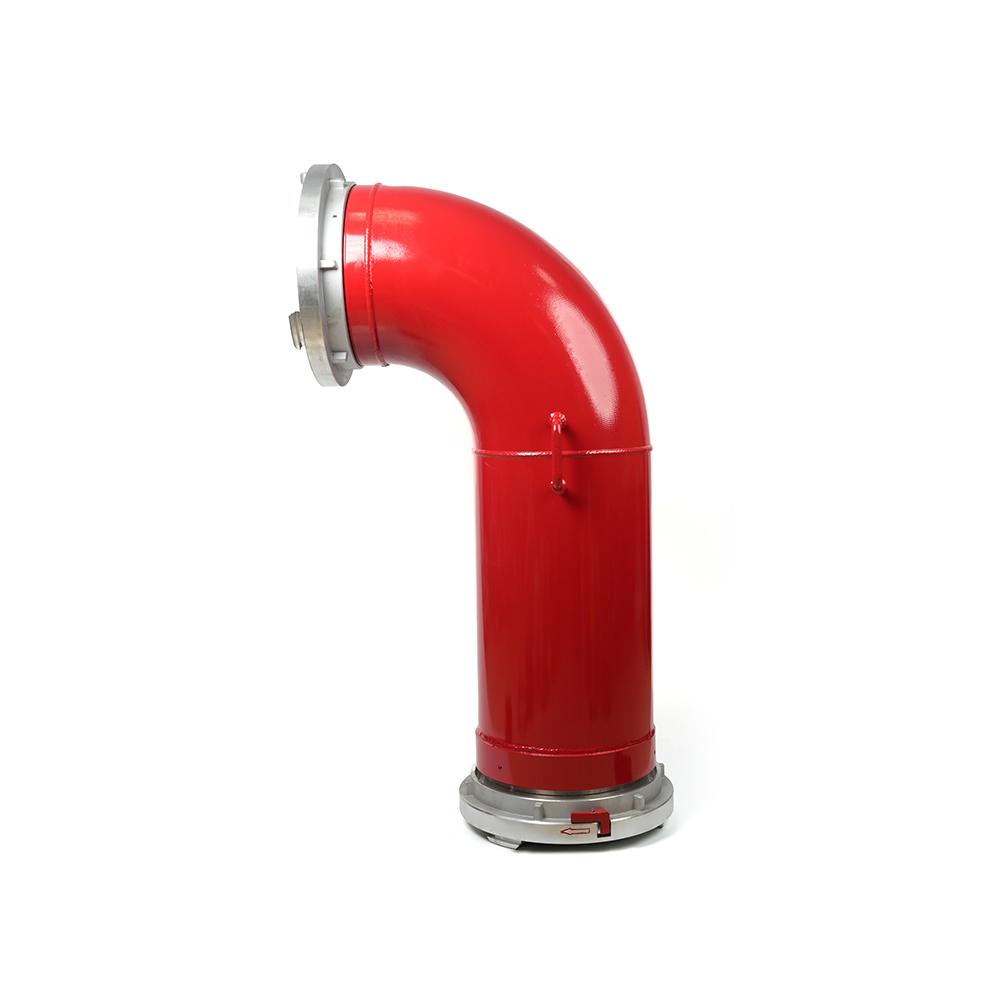 Grooved Fire Elbow-Storz
Grooved Fire Elbow-Storz
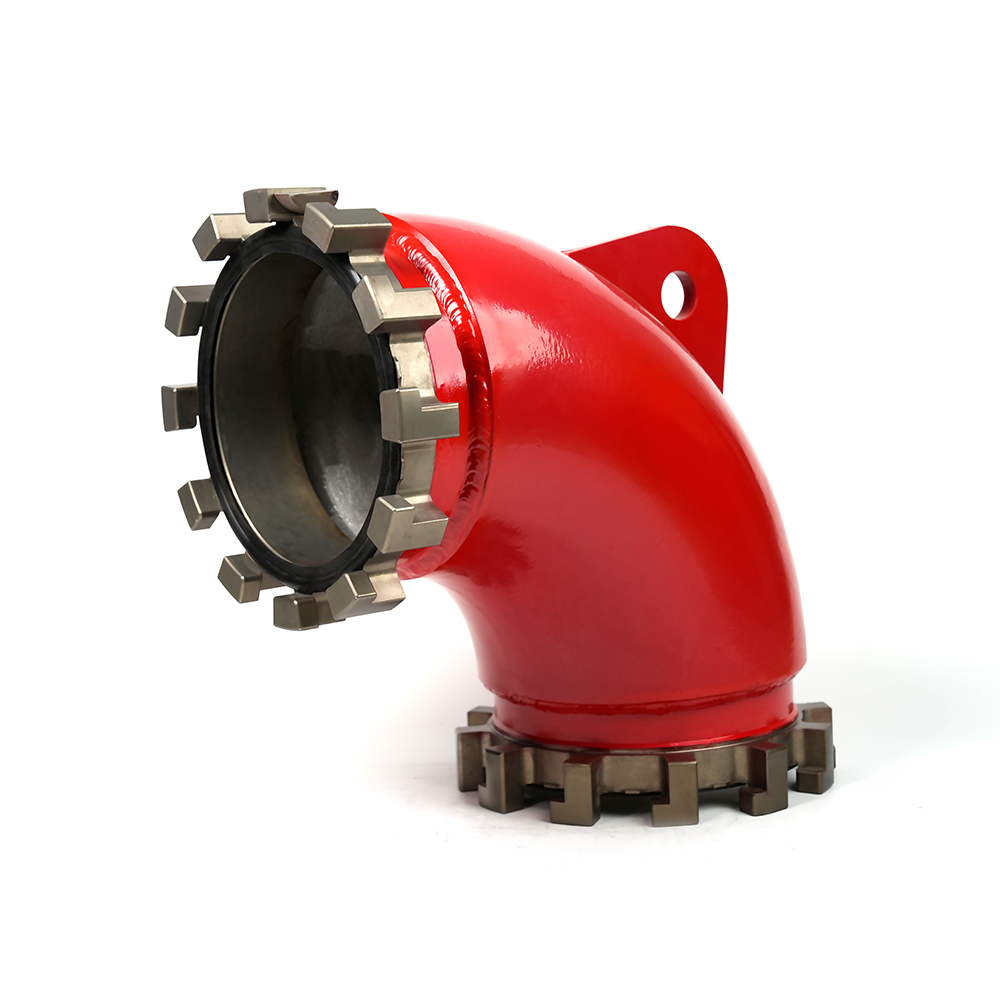 Grooved Fire Elbow-Multi-tooth
Grooved Fire Elbow-Multi-tooth
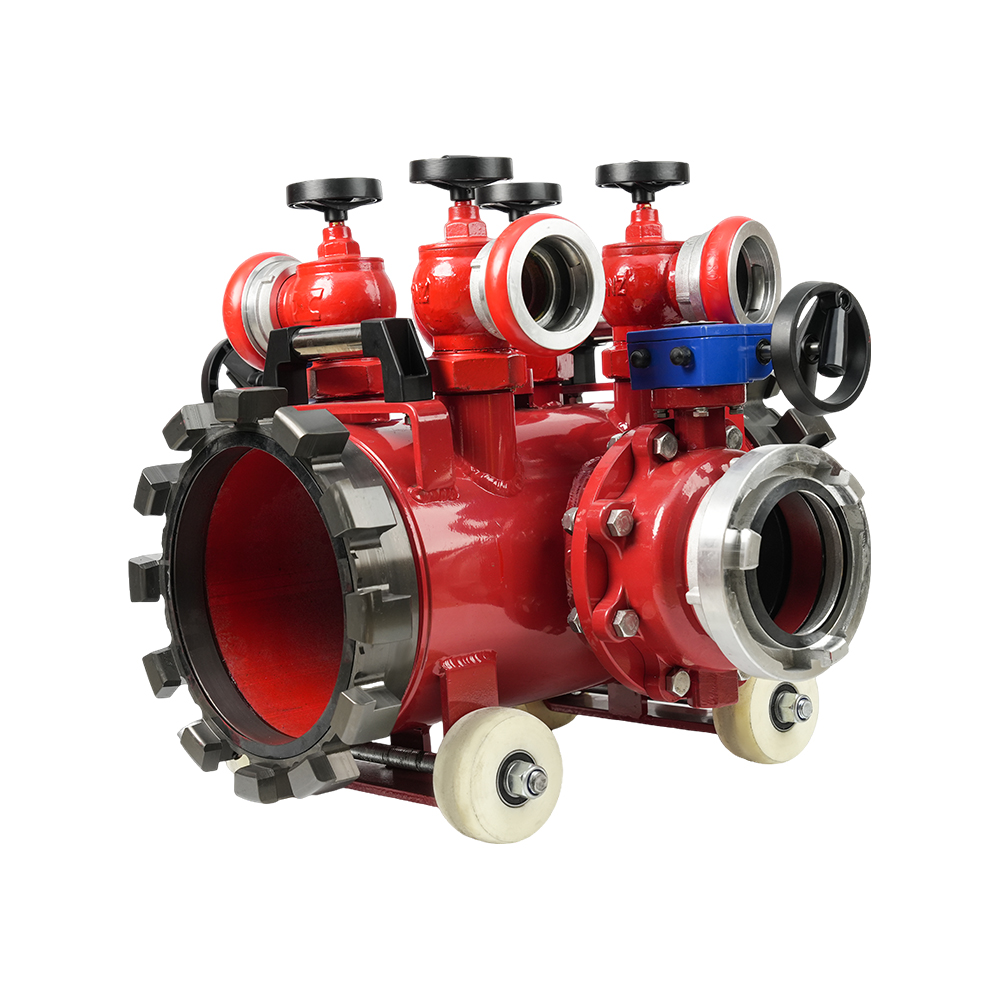 Multi-functional Fire Hose Distributor
Multi-functional Fire Hose Distributor
 Locking Four-Way Fire Hose Distributor
Locking Four-Way Fire Hose Distributor
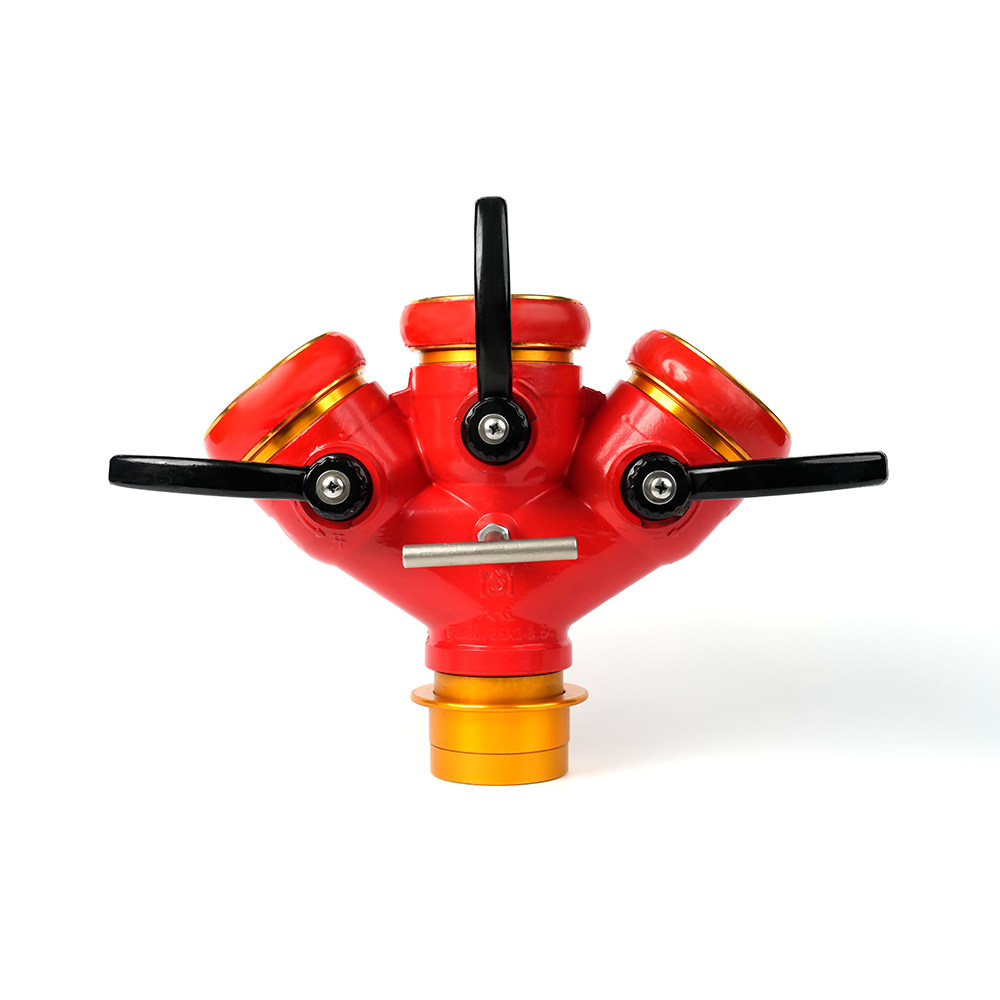 Locking Three-Way Fire Hose Distributor
Locking Three-Way Fire Hose Distributor
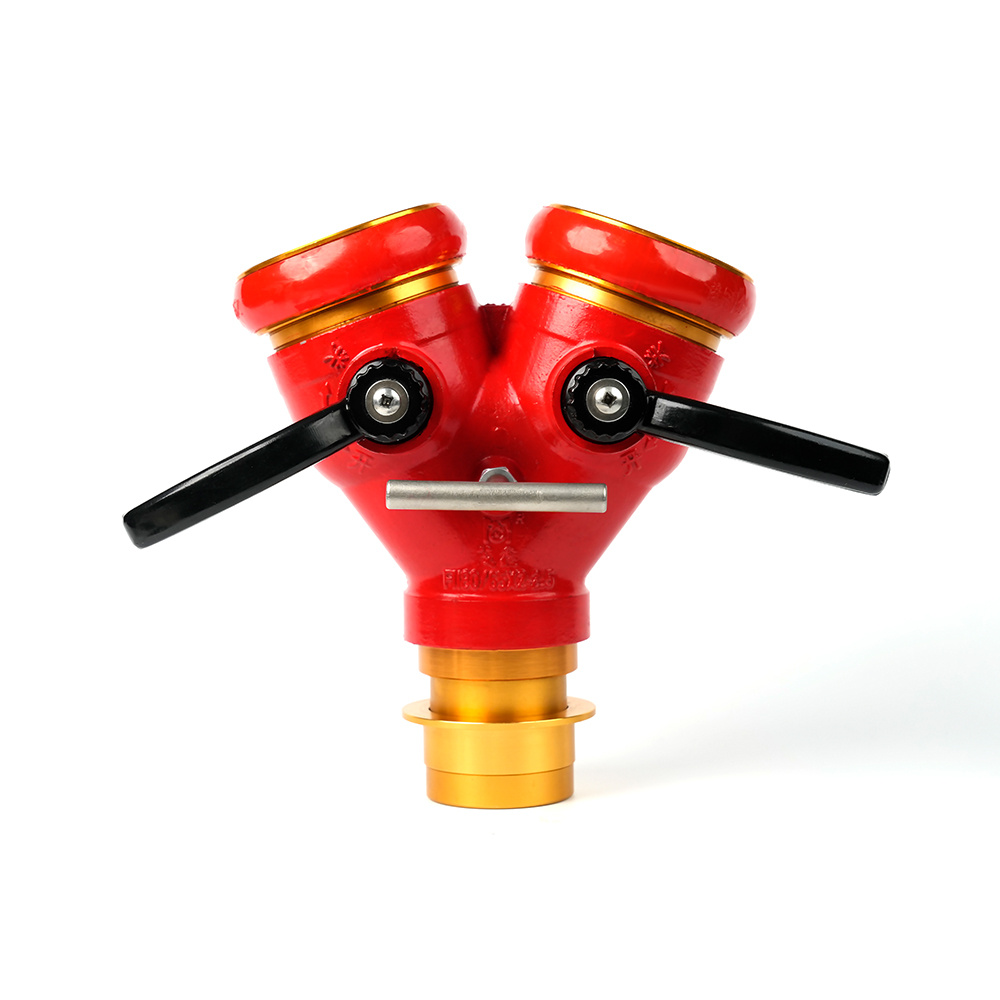 Locking Two-Way Fire Hose Distributor
Locking Two-Way Fire Hose Distributor
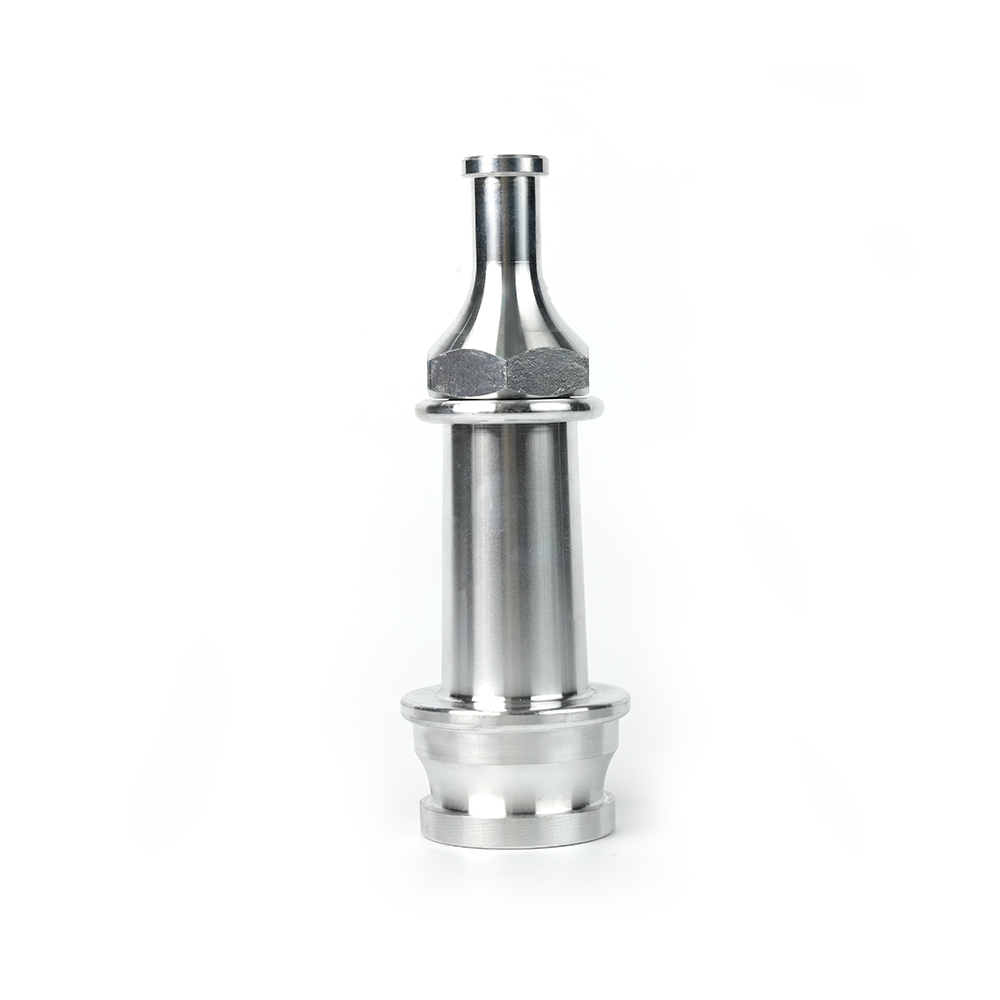 Straight Stream Nozzle
Straight Stream Nozzle
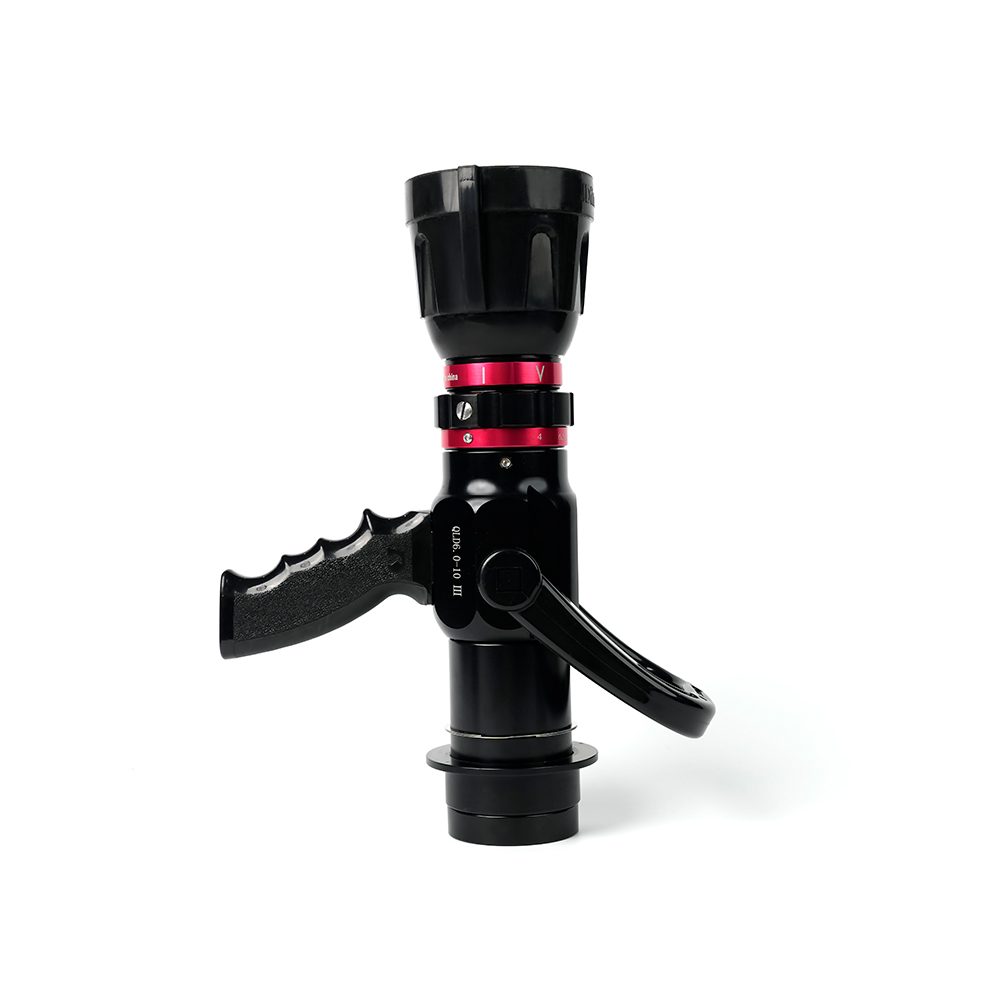 Adjustable nozzle-machino
Adjustable nozzle-machino
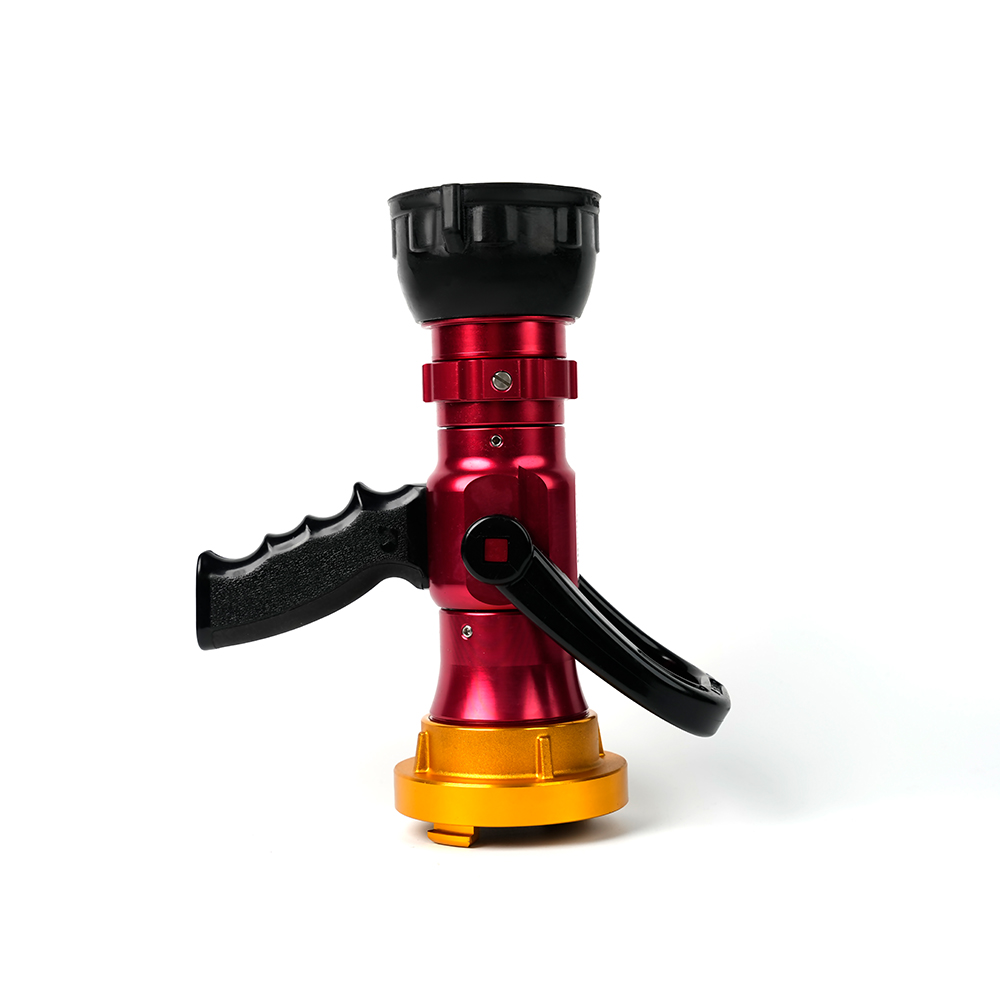 Adjustable nozzle-storz
Adjustable nozzle-storz
 Storz Adapter Couplings - Multi-Tooth
Storz Adapter Couplings - Multi-Tooth
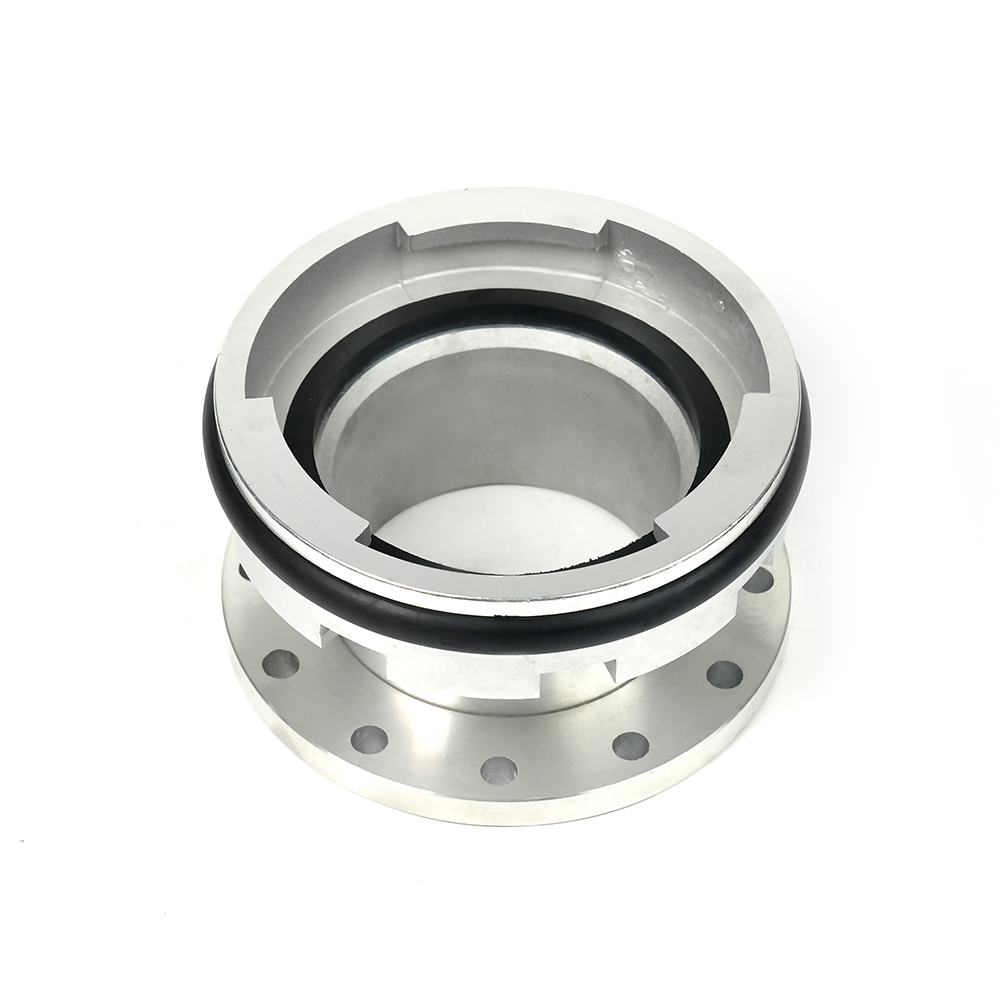 Machino Adapter Couplings – Flanged
Machino Adapter Couplings – Flanged
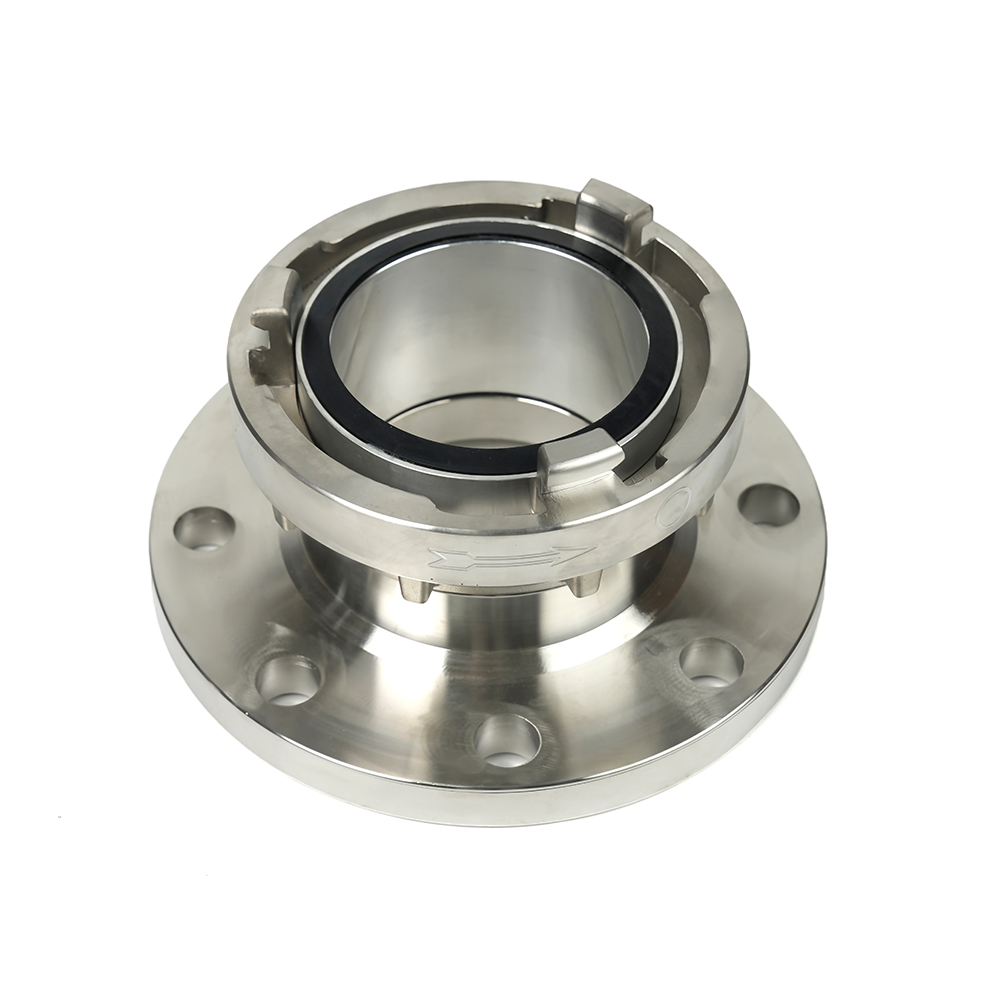 Storz Adapter Couplings – Flanged
Storz Adapter Couplings – Flanged